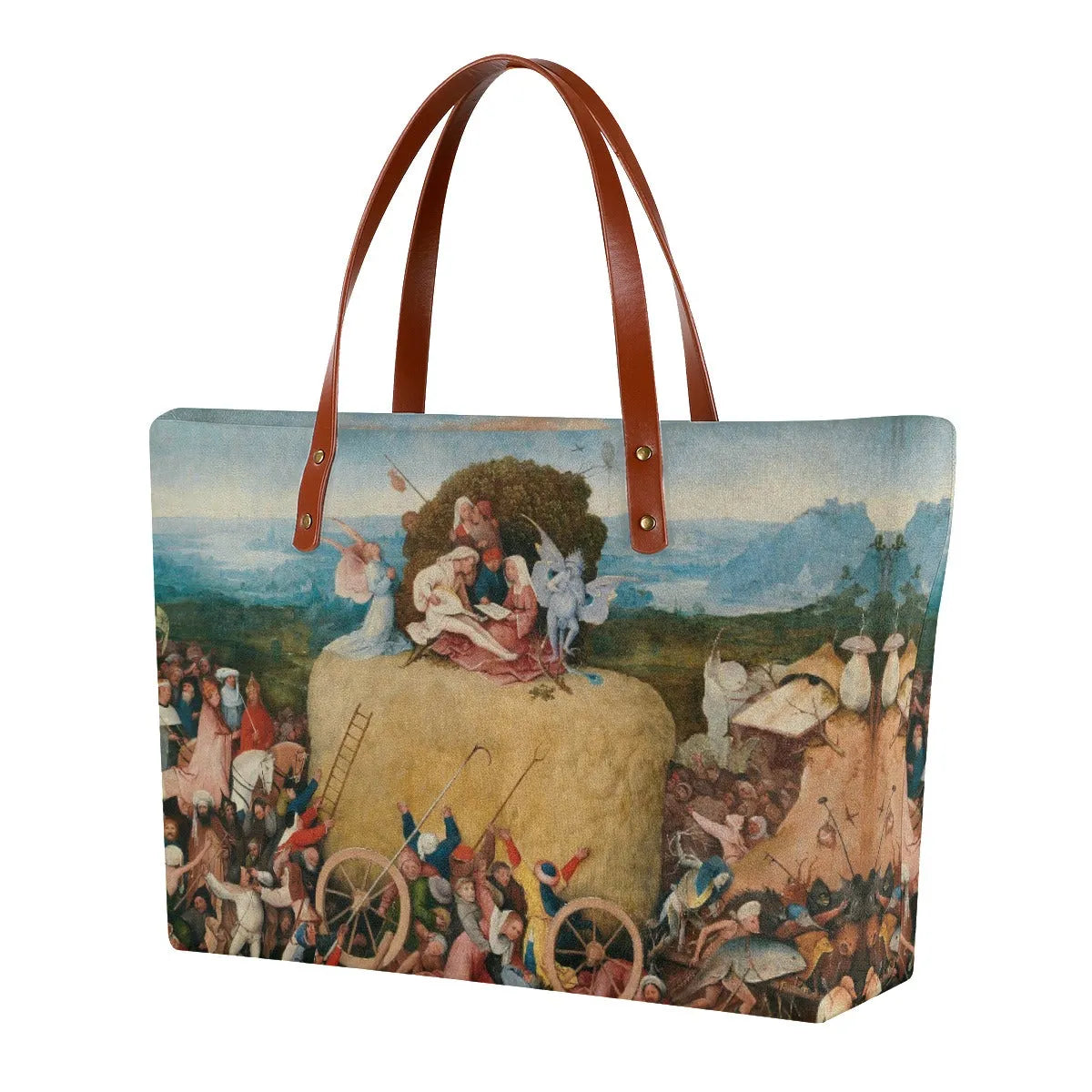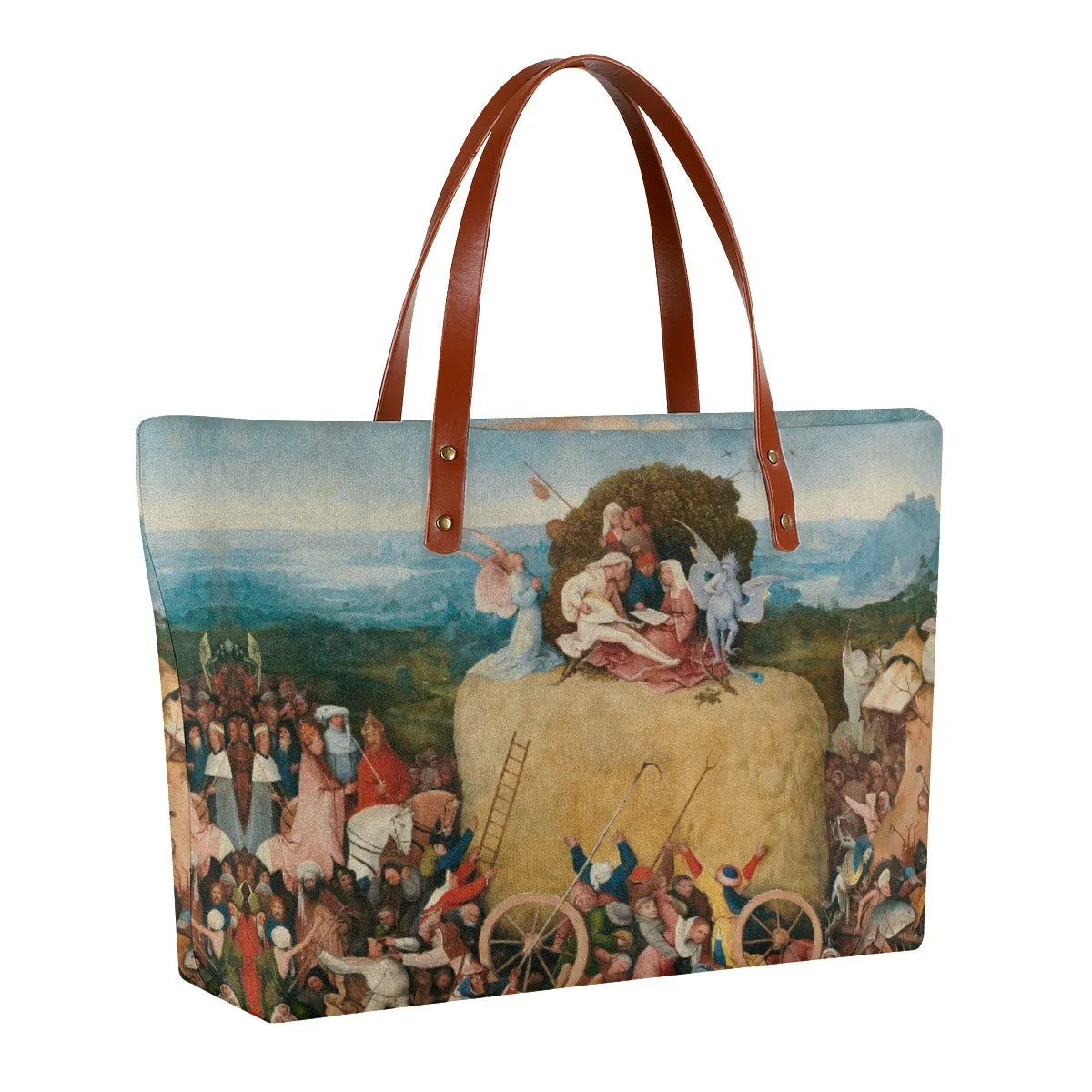



The Haywain Triptych by Hieronymus Bosch Tote Bag
Unveil a world of artistic wonder with The Haywain Triptych by Hieronymus Bosch Tote Bag. This exquisite accessory blends timeless beauty with modern functionality, making it a must-have for art enthusiasts and trendsetters alike. Carry your essentials in style while showcasing a masterpiece that has captured imaginations for centuries.
Step into a world of symbolism and hidden meanings with The Haywain Triptych Tote Bag. Each section of the bag tells a story, just like Bosch's masterpiece. The central panel's depiction of life's journey, flanked by scenes of paradise and hell, evokes reflection and contemplation. By owning this tote, you carry not only your belongings but also a piece of art that sparks conversations and engages the curious minds around you.
- Made of Diving Cloth
- Waterproof Fabric
- Large capacity
- Black zipper and Lining
- Brown strap
- Double-sided Famous Painting Art
Discover the surreal and enigmatic world of Hieronymus Bosch, one of the most celebrated artists of the Renaissance period. Here are more of Hieronymus Bosch's Famous Paintings.
About the artwork
We are aiming to have your order dispatched from our facility within 48 hours. However, please bear with us in case we are spending extra time in checking / perfecting your items, particularly during the peak season around end of the year. This does not include weekends or holidays.
Purchases made after 6pm PT will not be shipped out until the next business day. If you order after 6pm PT on a friday, your order will likely be shipped out on the following monday. For more information click here.
We provide a return policy, allowing customers to return products within a specified timeframe if they are not completely satisfied. For more information click here.
We offer a range of secure payment methods, including major credit cards and debit cards such as Mastercard, Visa, and American Express. Additionally, we support digital wallets like Apple Pay and allow for seamless transactions through trusted platforms like PayPal. For more information click here.
Choose options




20% Off Everything - Limited time only.
Enjoy Free Shipping on All Orders!
